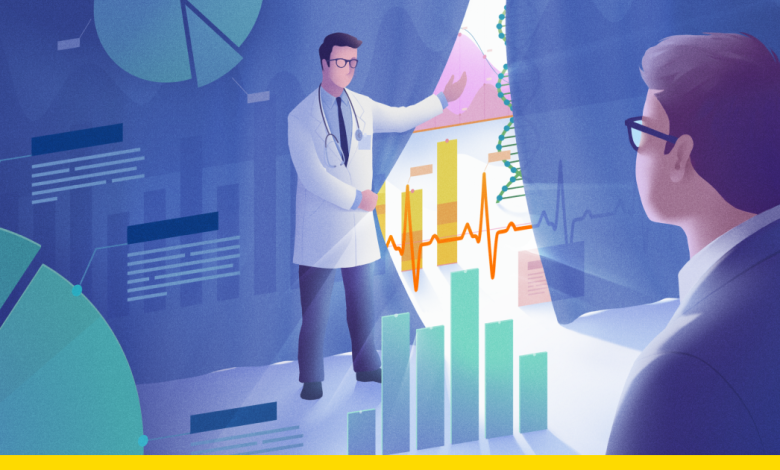Medication Reminder App Development Guide

Fred Kleinsinger, MD, has found that 40-50% of patients do not adhere to their treatment regimen. Patients forget to take medication or deliberately refuse to do so. There are many reasons for that, from lack of motivation to fear of side effects. Every year such behavior results in about 100,000 deaths in the USA, and the healthcare sector loses $100-300 billion. A medication reminder app can become a solution to this problem. What functions should be implemented in such a tracker and how to create it?
Why do people need a medication reminder app?
According to a study carried out for the International Journal of Environmental Research and Public Health, 45% of Americans suffer from chronic diseases. The CDC estimated that 90% of the nation’s $3.8 trillion in annual healthcare spending is allocated to treating people with chronic and mental diseases.
Hospitalizations and hospital costs can be reduced by monitoring if patients are taking their prescribed medications regularly. The researchers estimate that if the adherence to treatment regimen rate is improved by 10%, this measure will cut healthcare spending by up to 29%.
According to Statista, 21% of patients used a medication reminder app in 2017. 62% of people are considering using “virtual assistants”.
A medication reminder app helps you not to miss medications, take the right dosage of drugs, and avoid being readmitted to the hospital due to non-adherence to home treatment.
Medication reminder app functionality
A medication tracker is considered a simple program. However, such software has many functions:
Notifications
It is the basic function of the software which is created to remind patients about the necessity to take medicines. Smartphone owners usually receive notifications through mobile applications or instant messengers. There are rare cases when patients use old models of phones. But there is a solution. People can set up reminders in a web application. The platform sends SMS alerts or schedules a call from an operator. This variability helps to adapt to different target audiences.
Drug database
A user should be able to find the prescribed drug in the database, read the instruction, pay attention to possible side effects and limitations. It is not necessary to create a database on one’s own. It is enough to find a supplier of such catalogues and integrate the service into the application via an API.
Search
Some trackers offer functions of finding the nearest pharmacy and ordering home delivery of medicines. This is not a mandatory option, but it saves a lot of time for the patient. Moreover, during the pandemic, it is important to adhere to social distancing and avoid visiting public places.
Image recognition
This option helps the user to scan the packaging and find the right medicine in the database. The patient doesn’t have to manually enter the name of the drug. This feature is especially useful for visually impaired people.
Cloud sync
The data that the application collects is conveniently stored in the cloud. It is synchronized with any device with the help of which the patient opens the software. Thanks to this, when entering the program on a computer instead of a smartphone, the user will not miss important reminders.
Drug interaction assessment
Doctors prescribe drugs that interact with each other. But for users who are afraid of side effects the automatic drug interaction checking function will be important.
Advanced medication reminder apps include education materials on medicines, a symptom tracker, reports, and other options.
How to create a medication reminder app
To create a medication tracker, you need to take the same steps as for healthcare software development. These are planning, development, testing, and release.
-
Planning
You cannot start a project without prior preparation. It is necessary to research the target audience, find out their demands and preferences. Then, based on the information received, you should decide on:
– a set of functions that will help patients to solve problems;
– the development platform (iOS, Android, web)
– technology stack;
– requirements for the software product.
-
Design
A prototype shows what the application, transitions between screens, and small details will look like. The prototype helps the developers to understand the task and create the desired software. The team won’t have to redesign the app because layouts display it in minute detail.
-
Development and testing
The developers and testers of the medication reminder app do most of the work. The team implements the necessary functionality, tests the app along the way, and fixes the detected errors. Specialists ensure that the program complies with HIPAA requirements, configure such information protection mechanisms as two-factor authentication, biometrics, encryption, and secure data exchange protocols. They organize the project work so that the product enters the market on time.
-
Product release and service
After the product has been tested, the team releases it to a production environment. The developers move the code from production servers to public web servers. However, the work on the application does not end here. The healthcare software development company continues to support the product, and provides specialists who fix problems, update the product, transfer the software to other platforms, and so on.
Conclusion
A medication reminder app becomes a reliable assistant for patients. The platform supports home treatment so that patients do not risk their lives and do not end up in the hospital again. It helps to facilitate complex treatment and timely fulfill the prescriptions of doctors. For healthcare, such assistance means fewer deaths due to chronic diseases and less spending on protracted treatment.
When creating a medication reminder app, you should think about its end-users and consider what they will need for convenient work with the program. You should turn to an experienced healthcare software development company that knows such systems. IT specialists will implement the required functionality, test the product, and ensure compliance with data protection laws.




